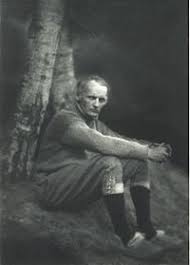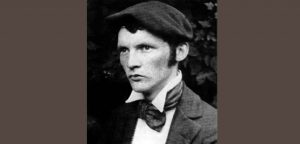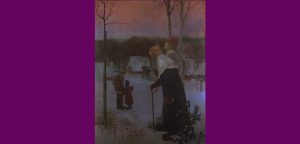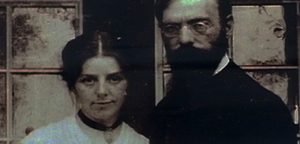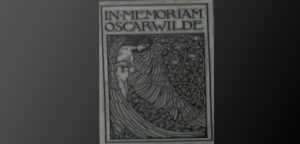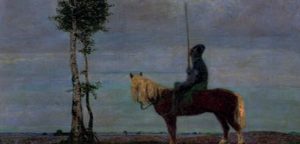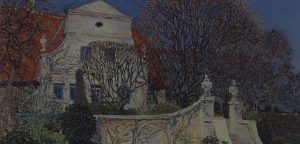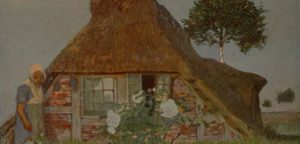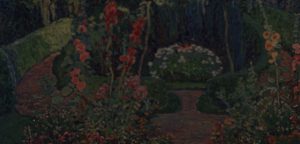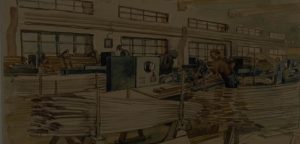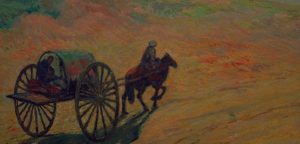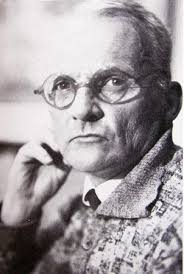Heinrich Vogeler was born on the 12th of December in 1872 in Bremen, Germany.
1872 - 1942
Heinrich Vogeler
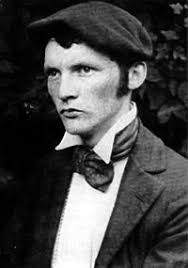
description
A German painter, graphic artist, designer, publicist and educator. Heinrich Johann Carl Edward Vogeler was a bright representative of Art Nouveau and one of the founders of Künstlerkolonie Worpswede, a colony of artists, where many famous German Impressionists and Expressionists worked.
He was born into a wealthy family. Despite the fact that his father wanted to give his son a commercial education, he persuaded his parents to allow him to paint. Henry studied at the Academy of Fine Arts in Dusseldorf, where his teachers were Peter Janssen and Eduard von Gebhardt. One of the sources of inspiration for the young artist was the works of Sandro Botticelli. Vogeler admired the paintings of the Italian master and sometimes compared his work to his own.
At the turn of the century, the artist was engaged in painting, graphics, decorated interiors, worked with silver, designed Symbolist magazine “Island”. His graphics for the tales of the Brothers Grimm in the art nouveau style is characterized by impeccable beauty and grace. Vogeler adhered to the communist views and opposed the military aggression of Germany. Along with numerous articles in the press, he wrote a number of journalistic pamphlets and books of the left orientation. The artist often visited the Soviet Union, and in 1931 moved to live in Moscow to stay there forever.
Vogeler created many illustrations for fairy tales and the works of contemporary symbolic poet artists. He also worked in applied art: chasing on silver, decorating interiors, decorating various household items. In 1895, Heinrich Vogeler developed the design of his manor in Barkenhoff, which was built and decorated according to the principles of Art Nouveau. The artist himself developed the design of furniture, dishes and wallpapers, as well as outfits and decorations for his wife.
Key Ideas:
– The works of German artist Heinrich Vogeler is remarkable for their amazing diversity and the variety of topics. He is the author of paintings, among which there are landscapes, portraits, interiors and scenes of everyday life, executed in the spirit of Pre-Raphaelites. They are created in a restrained color scheme and permeated with a lyrical mood.
– The artist’s favorite themes are the seasons, various states of nature and human feelings. Very often the heroes of Henry Vogeler’s paintings were his family members: the wife and children of the artist, as well as his friends – poets, artists and musicians, who often gathered in his estate Barkenhoff. Having moved to the USSR, Vogeler traveled extensively, making sketches and creating pictures on the theme of the work and life of Soviet people.
– A completely different artistic style is distinguished by the graphic works of the author, which relate to the best examples of Art Nouveau. Exquisite lines, a harmonious color palette and subtly painted vegetal ornaments remember Vogeler’s graphics.
1872
1892
1894
1897
1899
1902 - 1903
1907 - 1908
1914
1919
1930
1941
1942
The birth of the artist
He made a number of study visits to Holland, Belgium and Italy
During three years, he made a number of study visits to Holland, Belgium and Italy. Early paintings of Vogeler were created under the influence of Pre-Raphaelites, in particular, English artists Dante Gabriel Rossetti and Edward Burne-Jones. Unlike academic art, this group sought its inspiration in the Italian fine arts of the Middle Ages and had a strong influence on the emergence and development of Art Nouveau.
Made his first visit to Worpswede
Made his first visit to Worpswede (near Bremen), where he later acquired an estate where artists G. Ende, F. Mackensen, O. Moderson and others worked together. A special creative atmosphere was created in the village; the artists became good friends. Later they founded a creative colony in Worpswede, which was attended by many outstanding painters of Germany and other countries.
Paula Becker
Young painter Paula Becker joined the artists working in the village of Worpswede; she became the wife of Moderzon and a good friend of Vogeler. Under his leadership, Paula performed etchings.
Actively collaborated with several printed editions
Actively collaborated with several printed editions, the most closely with the editorial house of literary monthly magazine “Island”. Together with the authors of the magazine, the artist was engaged in the revival of the traditions of the printed matter, which at that time was in decline. He created illustrations for books, vignettes, ornamental frames, combining the artistic style of design with literary content to create an aesthetic unity. One of the first publications of the publishing house was illustrated poem “Deer”, as well as illustrations for the tales of Oscar Wilde. In the works of the artist of this period, the influence of the English book drawing, the graphics of Aubrey Beardsley and “Arts and Crafts” movement is noticeable.
Traveled to Italy
Traveled to Italy. Visited Rome and Naples, where he got acquainted with the frescoes of Hans von Mares and visited the excavations of Pompeii. After that he went to the north of Italy to Florence, Bologna, Padua and Venice. At this time, his painting “The First Summer” was shown at Secession exhibition in Berlin. In 1904, Henry Vogeler was one of the participants of the first exhibition of members of the Union of German Artists, where he showed his painting “Annunciation”.
Suffered after the death of his friend Paula Moderzon-Becker
Suffered after the death of his friend Paula Moderzon-Becker; finished work on rebuilding his house in Barkenhoff, using his own drawings and design projects in the art nouveau style. During this period, the artist was actively engaged in applied art: chasing on silver, decorating interiors, decorating various household items.
The artist was accepted into the dragoon regiment in Oldenburg
Immediately after the beginning of the war, volunteered for military service. The artist was accepted into the dragoon regiment in Oldenburg. After the end of the hostilities, Vogeler, disillusioned in military service, published a letter of protest to the German Kaiser, containing a call for peace. The artist was immediately dismissed from military service and for some time was under the supervision of police and psychiatrists.
The artist joined the ranks of the Communist Party
Founded a labor school for the children of German revolutionary political prisoners in his estate. The artist joined the ranks of the Communist Party and published articles of the corresponding orientation. The following year he first visited the Soviet Union, where he finally moved in 1931.
Lived in Moscow
Lived in Moscow, was engaged in teaching activities, created a series of decorative works dedicated to the working people of the USSR. He worked as an art critic, made excursion routes. He traveled a lot around the country, participated in exhibitions.
The artist was deported to the Kazakh SSR
In connection with the beginning of the invasion of the German troops of the Soviet Union, the artist was deported to the Kazakh SSR.
The death
The artist died on the 14th of June in 1942 in Korneevka, the Kazakh Republic.

